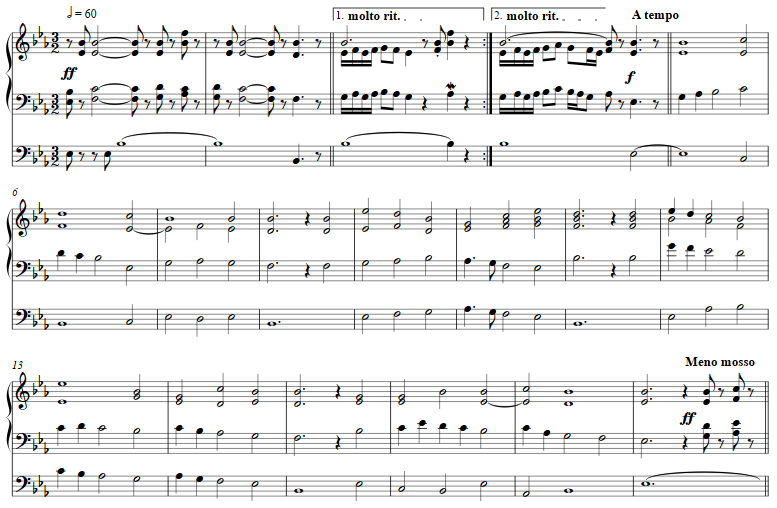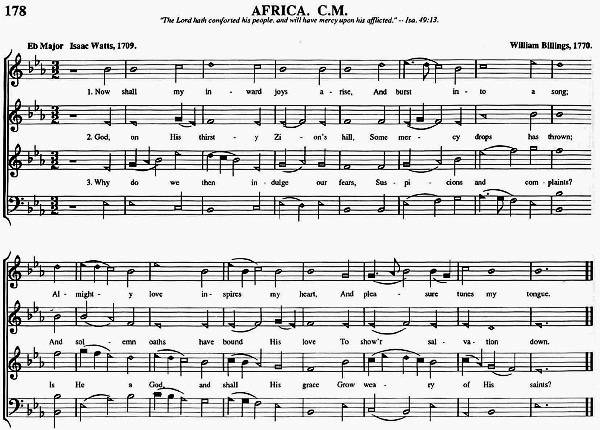Music and Texts of GARY BACHLUND
Vocal Music | Piano | Organ | Chamber Music | Orchestral | Articles and Commentary | Poems and Stories | Miscellany | FAQs
Essay on the Hymn Tune, "Africa"- (2024)
for organ
I attended a shape note "sing" some days back, and a host and sponsor of the event, Chris Walchesky, provided a hymnal with the comment this one among his favorites [ 1 ]. Looking to the tune's history, it comes from 1770 and the hand of William Billings (1746-1800). The tune is found in his "The New-England Psalm-Singer." Originally in hand manuscript, then through the shape-note hymnal, The Sacred Harp, it was being sung that Saturday with full voice and raucous enthusiasm. This little instrumental essay then is a small step on the long journey of the tune across centuries and various practices.
As to "full voice," one reads: "In Sacred Harp singing, loud is usually good, and louder is better. This is partly because of the musicís origins as a true folk music sung by ordinary people for pleasure and worship, partly because loud singing provides more catharsis, more instant gratification, more visceral pleasure, than controlled singing." In "First time at a Sacred Harp singing?" Text adapted from "A Beginnerís Guide to Shape-Note Singing," 4th edition, Lisa Grayson, Sacred Harp Publishing, 2009.
7 pages, circa 5' 45" an MP3 demo is here:

The score is available as a free PDF download, though any major commercial performance or recording of the work is prohibited without prior arrangement with the composer. Click on the graphic below for this organ score.
Essay on the Hymn Tune, "Africa"
[ 1 ] Of Billings, one reads: "William Billings is a quintessentially American figure. A first-generation American living in colonial Boston, he was a tanner by trade and described as a man 'with a short leg, one eye, a withered arm, a stentorian voice, a habit of taking enormous amounts of snuff,' and had a staunch upbringing in the colonial Congregational churches." In "Colonial Nationalism in the Music of William Billings,by Joshua Armenta, The Choral Journal; Oklahoma City, Vo. 52, Iss. 3, October 2011.
The shape-note page which was being sung is:
The original, as found in a number of edited editions with other engravings, is the hand-written:


